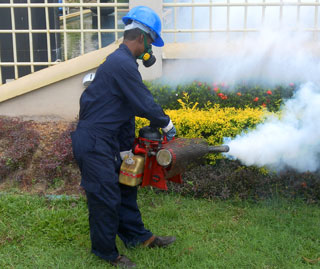Termite Fumigation Safety and Compliance Standards
Termite infestations can cause significant damage to structures, making termite fumigation a crucial process for pest management. However, ensuring safety and compliance during termite fumigation is paramount to protect both human health and the environment. Here’s an overview of the safety measures and compliance standards essential for effective and safe termite fumigation.
Training and Certification: Professionals engaged in termite fumigation should undergo comprehensive training and obtain appropriate certifications. This training covers the proper handling, application, and disposal of fumigants, ensuring safe practices and compliance with industry standards.

Use of Licensed Pest Control Operators: Fumigation should be carried out by licensed and experienced pest control operators who are knowledgeable about fumigant handling and application. Licensing ensures that operators are aware of safety procedures and comply with regulatory requirements.
Risk Assessment and Site Preparation: Before fumigation, a thorough risk assessment of the site should be conducted to identify potential hazards and mitigate risks. Adequate site preparation includes sealing the structure, removing pets, plants, and ensuring proper ventilation to reduce exposure risks.
Proper Fumigant Application: Fumigants should be applied according to the manufacturer’s guidelines and industry best practices. Appropriate website dosages and application methods are crucial to effectively eradicate termites while minimizing risks to humans, animals, and the environment.
Monitoring and Ventilation: Fumigation areas should be closely monitored to ensure that fumigant concentrations are within safe limits. Once the treatment is complete, proper ventilation and aeration are necessary to ensure that fumigants are safely dissipated before re-entry into the treated area.
Use of Approved Fumigants: Only approved fumigants registered by relevant regulatory bodies should be used for termite fumigation. These fumigants undergo rigorous testing to ensure their efficacy and safety for use in pest control.
Personal Protective Equipment PPE: Individuals involved in fumigation must wear appropriate PPE, including respiratory protection, gloves, protective clothing, and goggles, to prevent exposure to fumigants and ensure their safety.
Notification and Communication: Clear communication with building occupants and neighboring properties is essential. Proper notification and signage should be provided to inform individuals about the fumigation process, safety precautions, and temporary relocation requirements.
Proper Disposal and Waste Management: Fumigant containers and other waste materials generated during fumigation should be handled and disposed of in compliance with local regulations and guidelines. Safe disposal methods prevent environmental contamination.
Regular Audits and Compliance Checks: Periodic audits and compliance checks should be conducted to ensure adherence to safety standards and regulatory requirements. Corrections and improvements should be implemented based on audit findings.
Adhering to safety and compliance standards in termite fumigation not only protects the health and well-being of individuals but also contributes to environmental sustainability. Striving for continuous improvement and staying updated on industry advancements are essential for maintaining a safe and compliant fumigation process.
